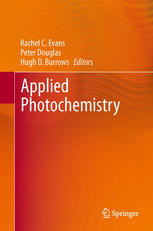

Most ebook files are in PDF format, so you can easily read them using various software such as Foxit Reader or directly on the Google Chrome browser.
Some ebook files are released by publishers in other formats such as .awz, .mobi, .epub, .fb2, etc. You may need to install specific software to read these formats on mobile/PC, such as Calibre.
Please read the tutorial at this link: https://ebookbell.com/faq
We offer FREE conversion to the popular formats you request; however, this may take some time. Therefore, right after payment, please email us, and we will try to provide the service as quickly as possible.
For some exceptional file formats or broken links (if any), please refrain from opening any disputes. Instead, email us first, and we will try to assist within a maximum of 6 hours.
EbookBell Team

4.8
14 reviewsApplied Photochemistry encompasses the major applications of the chemical effects resulting from light absorption by atoms and molecules in chemistry, physics, medicine and engineering, and contains contributions from specialists in these key areas. Particular emphasis is placed both on how photochemistry contributes to these disciplines and on what the current developments are.
The book starts with a general description of the interaction between light and matter, which provides the general background to photochemistry for non-specialists. The following chapters develop the general synthetic and mechanistic aspects of photochemistry as applied to both organic and inorganic materials, together with types of materials which are useful as light absorbers, emitters, sensitisers, etc. for a wide variety of applications. A detailed discussion is presented on the photochemical processes occurring in the Earth’s atmosphere, including discussion of important current aspects such as ozone depletion. Two important distinct, but interconnected, applications of photochemistry are in photocatalytic treatment of wastes and in solar energy conversion. Semiconductor photochemistry plays an important role in these and is discussed with reference to both of these areas. Free radicals and reactive oxygen species are of major importance in many chemical, biological and medical applications of photochemistry, and are discussed in depth. The following chapters discuss the relevance of using light in medicine, both with various types of phototherapy and in medical diagnostics. The development of optical sensors and probes is closely related to diagnostics, but is also relevant to many other applications, and is discussed separately. Important aspects of applied photochemistry in electronics and imaging, through processes such as photolithography, are discussed and it is shown how this is allowing the increasing miniaturisation of semiconductor devices for a wide variety of electronics applications and the development of nanometer scale devices. The final two chapters provide the basic ideas necessary to set up a photochemical laboratory and to characterise excited states.
This book is aimed at those in science, engineering and medicine who are interested in applying photochemistry in a broad spectrum of areas. Each chapter has the basic theories and methods for its particular applications and directs the reader to the current, important literature in the field, making Applied Photochemistry suitable for both the novice and the experienced photochemist.